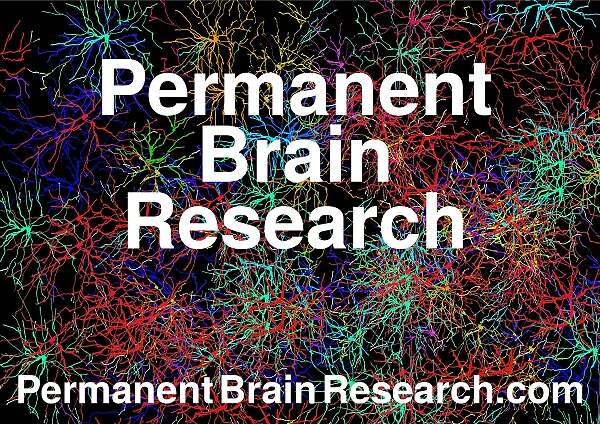The language of the brain
How memories guide us to rewards
Now in spring, some of us have a particular craving for ice cream. Picture this: You want to take a walk to your favourite ice cream parlour for the first time after winter. You can probably remember how to get there. How does our brain guide us to such rewarding places?
Insight into the neuronal communication language of the brain: This video shows the groundbreaking visualisation of neuronal activity between the hippocampus and the nucleus accumbens, decoded using innovative optical and analytical methods such as special fluorescent proteins and two-photon microscopy. Oliver Barnstedt’s team observed over 5,000 neurons in real time and simultaneously recorded the information of the anatomical target – to reveal how they encode spatial memory and reward experiences. The neuronal activities are marked in green, the cells leading to the nucleus accumbens in red. | Video-©: Oliver Barnstedt
In a study recently published in the journal Nature Communications, researchers from the Leibniz Institute of Neurobiology (LIN) in Magdeburg used state-of-the-art methods to answer this question. They discovered that our brain uses a special code to guide us to places that promise rewards.
Dialogue between brain regions
In the recently published study, the researchers focussed on the connection between the hippocampus and the nucleus accumbens, an area of the brain responsible for motivation and reward. The hypothesis is that communication between the two areas helps us to find places where we were previously rewarded. Although it was known that these regions work together, it was previously impossible to directly observe the activity of numerous neurons and know where they are sending information to. “What we have discovered is nothing less than the ‘language’ that our brain uses to guide us to the places we love,” explains Oliver Barnstedt, first author of the study.
Oliver Barnstedt, Petra Mocellin and Stefan Remy are researching the hippocampus at the LIN – an area of the brain that is crucial for remembering life events and spatial orientation and therefore plays a key role in memory. Damage to the hippocampus leads, among other things, to the loss of the ability to form new memories. Stefan Remy, head of the Cellular
Neuroscience research group, therefore concludes: “The ability to decipher highdimensional neuronal codes could lead to more precise therapies that directly target the restoration of memory functions.”
Innovative methodology
The scientific team working with Oliver Barnstedt used a range of novel optical and analytical methods to understand how the two brain regions communicate with each other. Using special fluorescent proteins and two-photon microscopy, the scientists were able to track the neuronal activity and the connections to the reward centre in the brain. Over 5,000 neurons were monitored to see how and when they became active – a groundbreaking method to understand how mice trained on a treadmill – reminiscent of a natural environment – identify and respond to reward locations.
Multidimensional brain codes
The team’s research suggests that nearly half of the neurons leading from the hippocampus to the nucleus accumbens simultaneously encode information about place and movement – a milestone in understanding how the brain integrates spatial and reward-related information. This multidimensional networking enables the brain to anticipate with high precision the places that give us pleasure. It is as if our brain cells map in advance the happiness’ of a rewarding experience such as visiting our favourite ice cream parlour.
Significance for medicine and therapy
“This study marks a turning point in our understanding of spatial memory and reward – and opens up new avenues for the treatment of diseases such as Alzheimer’s and addiction,” says Oliver Barnstedt. The insight into high-dimensional neuronal coding offers new approaches for the treatment of spatial disorientation in Alzheimer’s patients and for therapeutic strategies for addictive behavior. A deeper understanding of the neuronalprocesses that have now been visualized could be the key to more effective therapies.
Further information can be found online in the original publication at:
https://www.nature.com/articles/s41467-024-47361-x
About the Institute:
The Leibniz Institute of Neurobiology (LIN) in Magdeburg is a leading research institute in the field of neuroscience. It is dedicated to research in the field of learning and memory. Through innovative research and interdisciplinary co-operation, the institute contributes significantly to progress in neurobiology.

Oliver Barnstedt – lead author of a newly published study by the Leibniz
Institute of Neurobiology (LIN) in Magdeburg / Photo-©: Robin Ritter
Oliver Barnstedt on the path of cognition – reminding us of the paths we take to find reward. As lead author of a newly published study by the Leibniz Institute of Neurobiology (LIN) in Magdeburg, Barnstedt and his team have shown how our brain leads us to places we love because we associate them with reward. The hippocampus and the nucleus accumbens use a special code for this purpose, which, the results suggest, opens up new horizons for the treatment of memory disorders and addiction.
Source: Press Release, 17 April 2024
Press contact: Ulrike Papajewski
Leibniz Institute for Neurobiology, Brenneckestr. 6, 39118 Magdeburg, Germany
Tel.: +49 391-6263-92 341 | +49 151 18 48 12 01
E-Mail: ulrike.papajewski@lin-magdeburg.de
www.lin-magdeburg.de

